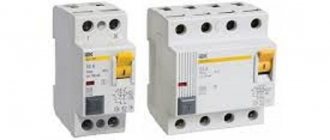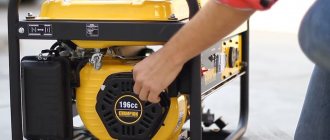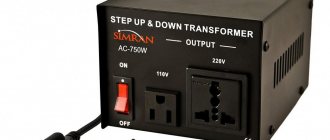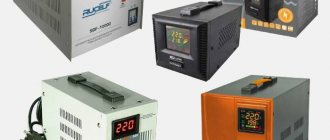The installation of an independent electrical system will provide energy to private buildings not connected to centralized networks. The result will help reduce the energy costs of cottages and houses. But in order to take advantage of the listed advantages, you need to know exactly how to make an autonomous power supply for a private home. Isn't it true?
We will talk about the design of independent power supply systems. Here you will find the fundamental principles of the device and important nuances of organizing the supply of electricity to private residential properties. The information we provide is carefully checked, systematized, and the information complies with building regulations.
In the article we propose, the options for constructing private energy systems are thoroughly analyzed, all possible sources of energy are presented and evaluated. The principles of construction and operation of an autonomous power supply are described in detail, the presented data is supported by photos and videos.
Weighted assessment of an independent system
Modern systems for autonomous power supply use a variety of resources to generate energy. This allows you to receive high-quality electricity without fluctuations even in the most remote and sparsely populated places, where all the benefits of civilization have not yet reached.
Advantages of autonomous electrics
The main advantage of autonomous power supply systems is the absence of consumption standards and fees for used energy. This allows you to provide any level of comfort in a residential building, regardless of whether there are central communications nearby or not.
If the preliminary power calculations are made correctly and are not underestimated, the system will work like clockwork and the owners will not encounter problems such as unexpected power outages and voltage surges.
A significant advantage of an autonomous power supply is the absence of surges, drops and overvoltages in the network, due to which household and computer equipment fail many times faster
The risk that household appliances in your home will fail or burn out due to an unexpected power surge will be reduced to zero. The quantity and quality of electricity received will always be the same and exactly as was originally planned in the project.
Equipment that provides independent supplies of electricity has a high level of reliability and rarely fails. This advantage remains relevant if basic operating rules and regular maintenance of individual elements and the entire system are observed.
In addition, pilot programs are already operating today that allow owners to sell excess electricity to the state. However, it is worth thinking about using this interesting opportunity in advance, even at the stage of developing a power supply system project.
Additionally, you will need to issue a package of permits confirming the ability of the available devices to generate the required amount of energy of appropriate quality.
Disadvantages of an independent power supply
The disadvantages of an independent power supply system include the rather high cost of equipment and significant operating costs.
The disadvantages of an autonomous power supply include the need to allocate space for placing equipment, carry out independent maintenance of the system and replace worn out elements at your own expense.
Electricians strongly recommend that owners make all calculations very carefully and clearly clarify the technical parameters of the system planned for installation. Otherwise, a situation may arise when the unit producing electricity fails without having time to pay for itself.
The owners also carry out repairs to the autonomous complex at their own expense, and these services cost a significant amount of money. If the house is located in a remote or hard-to-reach area, you will have to go to the craftsmen personally or additionally pay for the team to go to the site.
Moreover, everything will need to be done quite quickly, since home communications and amenities that run on electricity will be unavailable at this time.
If solar panel modules are selected as an autonomous energy generation system, they will need to be periodically cleared of debris in windy weather, and must be cleared of snow in winter. Only with such care will they fully function throughout the entire operational period.
Regular preventive inspection and scheduled maintenance of operating units will significantly reduce the chance of breakdown of autonomous devices, but this may also require a visit from specialists, which costs money.
Of course, the owner will do some of this work himself, but more serious issues that require certain experience and specific knowledge will still entail professional intervention.
Heating with solar collector
When choosing the optimal DHW system, it is necessary to take into account: the volume of hot water consumption, the availability of electricity capacity, the type of water heater and the DHW method, the cost of equipment, the cost of operation, the location and method of installation of the water heater and equipment, take into account the location of all DHW points, the location and material of hot water pipelines water.
Our company has successful experience in implementing projects for the installation of hot water supply systems for private houses, cottages, residential buildings and various facilities. We produce:
calculation and selection of a hot water supply system (free!), supply of materials and equipment at wholesale prices and professional installation and maintenance.
Share on social media networks:
Determining the Best Energy Source
Choosing an alternative energy source for autonomous power supply to a residential building is a very important and responsible moment that requires a serious approach.
The most popular and most common options include:
- generators running on diesel fuel or gasoline;
- solar panels;
- batteries of large volume and power;
- hydroelectric systems;
- wind energy converters.
Each source has its own unique characteristics and features. Owners should familiarize themselves with them in advance and, based on this information, determine the best option for a system that can satisfy all the electrical needs of a private residential building.
Gas generators
If your home has network gas, then installing a gas generator is the best option. The fuel for this device is the cheapest. The power of most products starts from 7 kW, and this is more than enough to power all electrical appliances in a country house.
True, the cost of a gas generator is 180 thousand rubles. But you need to consider how much you can save on fuel when compared to diesel or gasoline. And the most important thing is that there are practically no harmful emissions.
Features of generators
A generator is the fastest and easiest way to provide a private home with electricity. To operate, the unit uses gasoline or diesel fuel and, as a result of its combustion, produces the required amount of energy.
The main advantage is the complete independence of the device from seasonal changes and weather fluctuations. The disadvantages include the mandatory presence on site of a specially equipped fuel storage facility designed for a volume of 200 liters or more.
A diesel generator set is convenient and easy to operate, but for full operation it needs to receive at least 250 ml of fuel per hour. Powerful stations capable of providing energy to a small private house with actual resource consumption of several kilowatts per day will “eat” about a liter of diesel fuel for 60 minutes
Most often, gasoline and diesel generator sets are used as backup or temporary sources of electricity. This is due to the fact that for full operation the devices require significant amounts of fuel, the cost of which is constantly increasing.
A powerful gasoline or diesel generator is capable of providing an uninterrupted supply of electricity if the required amount of fuel is available. However, the device produces a lot of noise during operation. In order not to suffer from unwanted sounds, it is worth placing the unit in one of the adjacent utility rooms located at some distance from your own home and neighboring houses
The equipment itself is also expensive and requires preventive maintenance. More profitable options for generator sets include gas units. They do not require an uninterrupted supply of fuel and do not require storage for fuel materials.
However, the full operation of these devices is ensured by such a point as a mandatory connection to the central gas network, which is not always possible and affordable.
Installation of a gas generator in a house is carried out only on the basis of a package of permits and with the mandatory participation in the installation of a team of craftsmen from the local gas distribution company. It is not recommended to connect the device to the gas pipeline yourself in order to avoid potential leaks and various problems in the future.
It is because of these difficulties that generators are rarely chosen as the main source of supplying electricity to a private home.
But generators are an ideal solution for temporary use, for example, during the construction of a country house and the preparation of documents for its connection:
Image gallery
Photo from
Generator for the duration of construction work
Four batteries and an inverter
Lighting at night and in the evening hours
Lighting for wiring and finishing
During the first stages of construction, the generator will serve as the main source of energy, and after paperwork is completed and permission to connect to the general power grid is obtained, it will become backup equipment and will certainly come in handy more than once.
Power supply of a private house with solar panels
In private and country houses, solar panels are becoming increasingly common, used as main or backup power sources. The main function of these devices is to convert solar energy into electrical energy.
There are various ways to utilize the direct current generated by solar panels. It can be used directly, immediately after production, or accumulated in batteries and consumed as needed in the dark. In addition, direct current using an inverter can be converted into alternating current with a voltage of 110, 220 and 380 volts and can be used for various groups and types of consumers.
The entire autonomous solar power supply system operates according to a specific scheme. During daylight hours they produce electricity, which is then supplied to the charge controller. The main function of the controller is to control the battery charge. If their capacity is 100% full, the supply of charge from the solar panels stops. The inverter converts direct current into alternating current with specified parameters. When consumers are turned on, this device takes energy from the batteries, converts it and sends it to the network to consumers.
Solar energy, depending on the seasons, is not constant and is not always considered as the main source. In addition, the amount of electricity consumed daily also varies in different directions. Therefore, when the batteries are completely discharged, the home power supply system automatically switches from solar panels to other backup power sources or to the central electrical network.
Wind energy for autonomous power supply
In the case where meteorological or any other objective reasons do not allow the installation of solar panels or collectors, it makes sense to pay attention to the assembly and installation of a wind generator. It is a turbine placed on high (from 3 meters) towers.
It captures the kinetic energy of the vortex flow, converts it into mechanical energy by rotating the rotor, and then turns it into an electrical resource using special inverters.
The owner of a private house who has planned to install a wind generator with a power of more than 10 kW must carefully study information about changes in the direction and strength of the wind in his area over the past 20 years
Statistics can be provided by the weather service and various Internet services that allow you to monitor the weather online. If the winds in the region are considered a rare phenomenon and do not have the required strength, installing a “wind turbine” will be impractical.
Image gallery
Photo from
Wind generator in a suburban area
Wind turbine controller
Batteries for reserve charge
Inverter for converting the received current
The unit is reliable, the wind generator does not create harmful emissions into the atmosphere and does not leave production waste, but for full operation it urgently needs a constant wind blowing at a speed of at least 14 kilometers per hour. This is a very important condition, and if it is not met, the device simply will not cope with the assigned tasks.
Diesel generators
It is worth noting that this name can mean several varieties of this technique. This includes diesel substations and diesel generators. The advantages of such units are that they can work non-stop for a long period of time. Compared to gasoline generators, these units do not generate vapors that must be removed to ensure fire safety.
Of course, smoke from the device is intensely released, and for this reason it is necessary to provide high-quality ventilation in the room in which the equipment is installed. In principle, you can make the exhaust pipe as airtight as possible, use a flexible corrugation to lengthen it and take it outside. In this case, all exhaust gases will escape into the atmosphere. When providing a building with backup power sources, it is necessary that all harmful exhausts from the premises are discharged into the atmosphere.
Local hydropower systems
Using a hydraulic turbine to supply a residential building with electricity is a very realistic and profitable option, but only if there is a river or lake near the buildings. A small system powered by water energy is absolutely safe both environmentally and socially, is very easy to operate and has good efficiency.
Small hydraulic turbines are fully automated and do not require human participation in their operation. The quality of the energy they generate meets all GOST requirements both in frequency and voltage level
The lifespan of a miniature hydroelectric power station exceeds 40 years. For correct functioning, the system does not require large reservoirs and does not require flooding of large areas.
Image gallery
Photo from
Water Energy Option
Homemade turbine from wheel rims
Operating principle of mini hydroelectric power station
Auger in a hydroelectric power plant
Before installation, it is necessary to draw up an installation project and obtain the appropriate permits.
AUTONOMOUS POWER SUPPLY OF ELECTRONIC MEASURING DEVICES IN IRRIGATION SYSTEMS
AUTONOMOUS POWER SUPPLY FOR THE ELECTRON MEASUREMENT DEVICES IN IRRIGATION SYSTEMS
This article describes the ability to use an electromagnetic background of artificial origin for the supply of electronic measuring devices. An example of practical implementation of this approach. As well as proposals and described the working scheme that allows to achieve the necessary results.
Keywords: electromagnetic radiation, oscillatory circuit, alternative energy
The implementation of the principle of differentiated metering of water consumption in irrigation systems involves the installation of measuring devices at numerous ends of branched water supply lines. In this case, measuring devices must not only act as flow meters, but also transmit the received information to a remote server. The latter inevitably involves energy consumption, which must ensure the uninterrupted operation of these devices.
The operation of irrigation systems is often carried out in the absence of network power supply, and the significant branching and length of water supply lines call into question the economic efficiency of wired electricity supply. For this reason, it is advisable to power the measuring devices autonomously.
The use of chemical energy sources for autonomous power supply must be considered unpromising, since they require periodic maintenance or replacement. Sometimes a small amount of electrical energy can be obtained by converting the kinetic energy of a water flow. However, when used on a large scale, this method turns out to be ineffective due to the increased load on water supply lines and pumps [1]. There is known positive experience of some companies using solar panels to power sensors in irrigation systems [6]. At the same time, the variability of solar radiation, as well as the small number of sunny days in the central part of Russia, make this method not entirely suitable.
A promising method of obtaining electrical energy to power measuring devices is to transform the electromagnetic background of artificial origin. The source of this background is local radio stations, television transmitters, Wi-Fi routers and other high-frequency emitters.
The practical use of electromagnetic background began in the early 60s of the twentieth century. It was then, with the advent of cheap semiconductor devices, that various circuits of useful devices (radio receivers, generators, electronic watches, etc.) powered by the energy of the electromagnetic fields surrounding us were developed and described in detail [4, 5]. Of course, we were talking exclusively about low energy levels capable of providing power consumption of several tens of milliWatts.
Over the past decades, the level of electromagnetic background in human habitats has increased several times. Numerous radio repeaters, mobile communication base stations, trunking receiving and transmitting nodes, all kinds of navigation, security, information and warning and other radio-equipped equipment were added to the sources of electromagnetic radiation that existed in the mid-twentieth century. In this case, there was both an increase in the background level and a noticeable shift in the maximum radiation to the region of shorter waves.
Recently, interest in the practical use of electromagnetic background of artificial origin has increased markedly. The idea of converting electromagnetic background into power supply energy for low-power consumers is beginning to be applied in a variety of fields. For example, Washington State University researcher Shyam Gollakota is leading a project on using dissipated energy to power mobile equipment in contactless payment systems [2]. The miniature devices he created make it possible to transfer virtual funds in the complete absence of batteries or external power sources. When demonstrating devices, all built-in LEDs, sensors, microcontrollers and communication units function normally using the energy of local television stations.
Interesting research from Powercast Corporation, which back in 2010 released the P2110B Powerharvester Receiver, capable of collecting directed and scattered electromagnetic energy and converting it into DC voltage. The resulting energy recharges the batteries to power low-current radio equipment. According to the developer, the receiver generates a voltage of 5.24\5 V and provides a current of about 50 mA [7].
The use of dissipated electromagnetic energy to power measuring devices in irrigation systems is attractive for a number of reasons:
1. The measuring devices are installed stationary, which determines the constancy of the conditions for receiving electromagnetic background:
2. the intensity of the electromagnetic background turns out to be largely predictable, since the operation of most of its sources obeys known schedules;
3. the power consumed by the transmitting modules is commensurate with the power characteristics of the receiving device;
4. the specific operation of measuring devices allows data to be transferred to a remote server in a periodic mode, which determines the ability to alternate modes of accumulation and use of converted electromagnetic background energy;
5. receiving devices are easily tuned to the frequency of the dominant source, which opens up the possibility of efficient use of electromagnetic background energy; the transition from one dominant frequency to another is easy to carry out automatically.
Figure 1 shows a functional diagram of a measuring device that measures water consumption and transmits information to a remote server, and rps.2 shows a circuit diagram of the recharging unit [3].
The measuring device contains a housing 1 having an inlet hole 2 and an outlet hole 3. In the cavity of the housing 1 there is a shaft 4, the longitudinal axis of which is perpendicular to the fluid flow. An impeller 5 and a magnet 6 are rigidly fixed to the shaft 4 with the possibility of rotation relative to the longitudinal axis of the shaft 4. A permanent magnet made of composite material is used as a magnet 6 in the developed design. The counting reed switch 7 (magnetic-controlled contact) is installed in the zone of confident influence of the magnetic field created by the permanent magnet 6 (with a gap of 0.8...2.0 mm from the circle described by magnet 6 when shaft 4 rotates). The counting reed switch 7 is connected to a computing device 8, which is a microcircuit that implements the functions of summing pulses. The output of the computing device 8 is connected to the liquid crystal display 9 and the control unit 10. A cascade of microcircuits is used as a control unit 10, which implements the functions of storing information and generating files for their periodic transmission to an external information network. The computing device 8, the liquid crystal display 9 and the control unit 10 are connected to the power supply 11. A lithium microbattery CR2032 is used as a power source 11
The charging unit 12 contains an antenna 13, an oscillating circuit 14, a rectifier 15 and a voltage stabilizer 16. Antenna 13 is an ultra-broadband receiving element, for which a piece of wire of arbitrary diameter is used. Antenna 13 is connected through an oscillating circuit 14 to the input of the rectifier 15. The oscillating circuit 14 is formed by a set of capacitances of parallel-connected capacitors C1 and C2 and the inductance of the coil L1. The developed design uses a half-wave rectifier circuit 15 based on Schottky diodes VD1 and VD2. The output of the rectifier 15 through the voltage stabilizer 16 is connected to the power supply 11. The voltage stabilizer 11 includes a zener diode VD3, a compensation circuit based on semiconductor triodes VT1 and VT2, and a smoothing capacitor C5.
The capacitance values of capacitors C1, C2 and the inductance of coil L1 are selected in such a way that a resonance occurs in the circuit they form at the frequency of the prevailing electromagnetic background of industrial origin. Such a background can be created by the carrier frequency of nearby radio stations, television transmitters, Wi-Fi routers and other radio wave emitters. In this case, the type of modulation (amplitude or phase) is not of fundamental importance. The developed design used electromagnetic background of industrial origin, created by a local medium-wave radio station (carrier frequency 1370 MHz). In this case, to achieve resonance, the total capacitance of capacitors C1 and C2 is 950 pF, and the inductance of coil L1 is 39 μH. Inductor L1 is wound on a frame with a diameter of 50 mm and contains 60 turns of wire with a diameter of 1.6 mm with a winding length of 250 mm (pitch is approximately 4 mm). The magnetic core of the inductor L2 is a ring T-106-2 (27 × 14.5 × 11.1 mm) made of carbonyl iron, the winding consists of 88 turns of wire with a diameter of 0.4 mm.
The measuring device operates as follows.
The measuring device is installed in the pipeline. Flowing water enters housing 1 through inlet 2 and is removed from it through outlet 3 (in Figure 1, the direction of fluid movement is shown by arrows from left to right). Moving in the cavity of the housing 1, water interacts with the blades of the impeller 5 and causes it to rotate. Simultaneously with the impeller 5, the rotation of the shaft 4 and the magnet 6 occurs. With each rotation of the magnet 6 around the longitudinal axis of the shaft 4, the counting reed switch 7 is triggered. At the output of the counting reed switch 7, pulses are generated, which are sent to the input of the computing device 8. In the computing device 8, summation is carried out pulses within a specified time interval. From the output of the computing device 8, the results of the summation of pulses in binary code are supplied to the inputs of the liquid crystal indicator 9 and the control unit 10. In the liquid crystal indicator 9, the received signals are converted into decimal form and supplied to the liquid crystal elements for visual monitoring of the current water flow. In the control unit 10, information is stored, as well as files are generated for their periodic transfer to a remote server. The computing device 8, the control unit 10 and the liquid crystal display 9 are powered from the power supply 11.
The electromagnetic background of industrial origin is perceived by the antenna 13 of the charging unit 12. A resonance phenomenon occurs in the oscillatory circuit 14 and an alternating electrical voltage appears at its output. This electrical voltage is supplied to the rectifier 15, where it is rectified (detected).
The constant voltage from the output of the rectifier 15 is supplied to the voltage stabilizer 16, which maintains it at a given level, protects the power source 11 from overcharging and protects the diodes VD1 and VD2 when the power source 11 is turned off (due to possible breakdown by reverse voltage). When the voltage across the load (at the input terminals of the power supply 11) is of the set value, the current does not flow through the zener diode VD3, and therefore the semiconductor triodes VT1 and VT2 remain in the closed state. When the voltage increases above the set value, they open and resistor R4 bypasses the output of voltage stabilizer 16.
From the output of the stabilizer 16, electrical energy is supplied to the power source 11, recharging it.
Due to the operation of the charging unit 12, the measuring device does not require maintenance throughout the entire service life of the power supply source 11. In addition, when connecting the control unit 11 to an external controller (or computer), it becomes possible to extract information about water consumption at an arbitrary point in time during the operation of the device, as well as about the amount of water consumed over an arbitrary time interval. When connecting the control unit 11 to an external information network, it becomes possible to use a measuring device in a commercial accounting system. In this case, the water flow measuring device performs the function of a primary converter, and flow metering is carried out centrally on a remote server.
Bibliography
1. Matveev A.I., Andreev S.A. The use of generator flow meters in automated water metering systems // A.I. Matveev, S.A. Andreev // Innovative technologies in the agro-industrial complex: theory and practice: Collection of articles of the III All-Russian Scientific and Practical Conference / International Scientific Research Center Perm State Agricultural Academy.-Penza: RIO Perm State Agricultural Academy, 2015.- p.94-97
2. Science 21st century, August 15th, 2013, New devices take energy from radio signals. URL: https://nauka21vek.ru/archives/51808
3. Patent No. 155165 Russian Federation. IPC G01F1/00 (2006.01) Device for measuring liquid flow / Andreev S.A., Matveev A.I. – No. 2015100179/28; application 01/13/2015; publ. 09/27/2015. Bull. No. 27.
4. Transistor receivers without energy sources // Radio 1962, No. 6 – P.53.
5. On powering radio receivers with “free energy” // Radio 1997, No. 1 – P. 22...23.
6. ITU NEWS. No. 1 January 2014.Big data, big deal, big challenge. Smart irrigation for sustainable agriculture in Abu Dhabi. URL: https://itunews.itu.int/ru/Note.aspx?Note=4884
7. Product Datasheet P2110 – 915 MHz RF Powerharvester™ Receiver, SPECIFICATIONS
Batteries for autonomous systems
The principle of operation of the battery is clear and simple. As long as there is electricity in the central network, the batteries are charged from the outlet and accumulate resource in their blocks. Solar batteries function in a similar way.
When energy supplies are interrupted, the modules, through a special inverter installation, supply electricity to household appliances and various home systems.
When choosing a battery to create a backup electrical system in a residential building, it is worth determining which devices and modules of household appliances must be connected in the event of a lack of light. By adding together their base power, you can get a number indicating the capacity of the battery, capable of powering the most necessary devices
They are not suitable for constantly providing a living space with electricity, but they will cope with the role of a backup complex perfectly.
The following article, which is entirely devoted to this interesting issue, will introduce you to the best developments for organizing alternative energy in a country house.
Gasoline generators
Common options for devices for providing home backup power. The design of gasoline engines is much simpler than diesel engines. Most owners of country houses have a car at their disposal. Consequently, knowledge about the principles of operation of an internal combustion engine is available. In addition, such generators are very easy to maintain. Therefore, such backup power sources in schools are used along with UPS. The latter allow the equipment to operate for 15-30 minutes. During this time, the gasoline generator is started and switched to backup equipment. All equipment must be tested and have appropriate documentation. This includes an act of checking a backup power supply.
The best solution is the integrated use of various sources of electricity
If the home owner is still obsessed with the desire for complete autonomy in matters of power supply, then the creation of an integrated energy system should be considered the best option. It will include a wind generator (one or more), the required number of solar panels, a battery station, all the necessary switching and conversion equipment (controller, inverter). And a plus to this is a backup energy source in the form of a permanently installed diesel or gasoline generator.
With this approach, all the advantages of each of the considered schemes are fully used and the existing disadvantages are smoothed out. And in general, a home power plant appears to be a full-fledged “organism” capable of fully satisfying the energy needs of a country house.
Advanced diagram of a home power plant with multiple energy sources.
The numbering of positions in this diagram is preserved, by analogy with that discussed in the section on solar power plants. But, as you can see, there are significant differences.
So, both solar panels and a wind generator (item 1a) are used simultaneously as an external source of free energy. Under ideal conditions, that is, on a clear windy day, they will simultaneously work to charge the batteries. It's okay - if the charge level reaches the upper limit, the controller will either choose priority by turning off one of the sources, or even temporarily turn off both.
It is clear that at night or during long cloudy weather only a wind turbine will work. Likewise, when there is no wind, solar panels become the main source of energy.
If circumstances develop in such a way that none of the sources works fully, and the accumulated charge becomes insufficient (the batteries are approaching the lower permissible discharge limit), the liquid fuel or gas generator is automatically started (position 6). It, depending on the specific conditions or settings made, will work either only to recharge the battery pack, or will simultaneously take over the general energy supply of the house.
As a result, the owners (if they have a sufficient supply of fuel) are fully insured - they will have electricity under any circumstances.
Of course, creating such a universal “smart” system requires a professional approach. When drawing up a project, it is necessary to take into account many initial criteria and select the right equipment in order to avoid possible conflicts between individual nodes and modules. The implementation of the project will require very considerable costs, both in terms of purchasing equipment and carrying out installation and commissioning work.
But the output will be a system that, upon any consideration, can be considered a full-fledged autonomous home power plant.
* * * * * * *
The publication examined the main sources of electricity in a home autonomous power plant. True, there are still a few options left “behind the brackets”, which are used infrequently in practice or even simply exist so far only in the form of experimental samples. So, if a large amount of waste has been removed, and a river or stream flows through the site, it is quite possible to install a water wheel or turbine connected to a generator. Given that the flow rate usually remains stable, such a source of electricity will work regardless of the vagaries of the weather. True, in the winter season, in our climate, most of these reservoirs freeze, which complicates the operation of the station or even makes it completely impossible.
If the site is crossed by a stream or river, then why not take advantage of the potential of moving water?
Other methods are more exotic. Thus, on the Internet you can find drawings and discussions of projects for stations that generate current from atmospheric electricity. Another direction is the use of inexhaustible geothermal energy. But it is not yet possible to talk about the seriousness of such approaches at the current level of technology development and the availability of the required equipment. However, we must assume that in the future such sources for generating electricity will become commonplace.










